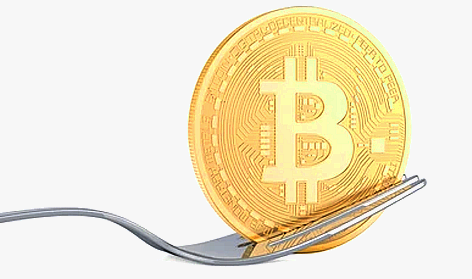Accredited InvestorsAltcoinAnatoli UnitskyAnti-Money Laundering (AML) In CryptoAPIArbitrageArtCoin TokenArticle DirectoryASICAuction Terminology GlossaryBasics of Stock Market InvestingBear MarketBest Crypto Payment Provider In the WorldBitcoinBlockchainBlockchain ConfirmationBlockchain Consensus MechanismBlockchain ForkBlockchain GlossaryBored Ape Yacht ClubBuild a Business That OutperformsBull MarketBuying SkyWay SharesByzantine Fault Tolerance (BFT) ExplainedCasascius CoinCentral Bank Digital Currency (CBDC)Centralized Crypto ExchangeCoinCoinsetCold WalletCollateralCommodity Futures Trading Commission (CFTC)Cross-Chain TechnologyCRUCrypto ExchangeCrypto GlossaryCrypto JokesCrypto Terms to KnowCrypto TickerCryptocurrencyCryptographyCryptojackingCryptounit BlockchainCryptounit GlossaryCryptounit ProgramdApp (Decentralized Application)Dead CoinDecentralized Exchange (DEX)Decentralized Finance (DeFi)Difference Between Bitcoin and EthereumDifferent Ways of Investing MoneyDigital CurrencyDistributed LedgerDo Your Own Research (DYOR)Dollar Cost Averaging (DCA)Dow Jones Industrial Average (DJIA)EncryptionERC-20ERC-721EthereumEvoScentFear Of Missing Out (FOMO)Fear, Uncertainty and Doubt (FUD)Fiat MoneyFNT Fintech CompanyGenesis BlockGlobal Unit PayGlossary of Banking TermsGlossary of Business TermsGlossary of Financial TermsHalvingHODLHot WalletHow Do I Start InvestingHow Rich is Satoshi Nakamoto?How to Create a BlockchainHow to Find Private InvestorsHow to Get Into FintechHow to Program Smart ContractsI Am Thrilled to Be a Part of This Global ProjectInitial Coin Offering (ICO)Initial Public Offering (IPO)Initial Token Offering (ITO)Innovation Basalt TechnologyInnovative Transportation TechnologiesInternational Bank Account Number (IBAN)Investing in Gold Mining StocksInvesting in Gold MiningJagerJoy of Missing Out (JOMO)Know Your Customer (KYC)LedgerLiquidity in CryptocurrencyMaker and Taker Fees in Crypto TradingMarket Capitalization (Market Cap)Meme CoinMetal Credit CardMetaMaskMillenials Now Have Access to Generational WealthMy Best Investment EverNew Digital EvolutionNFT GlossaryOff-Chain TransactionsOn-Chain TransactionsOpen Edition NFTPeer-to-Peer (P2P)Personal Loan GlossaryProbably the Best STO on the MarketProof of Stake (PoS)Real Estate Glossary of TermsReal Estate Investing GlossaryRebase TokenSecurities and Exchange Commission (SEC)Security Token ExchangesSecurity Token Offering (STO)Soulbound Decentralized Identities for Security TokensSoulbound ID Launch by Stobox Proves a SuccessSoulbound TokensStoboxStock Market GlossaryTestimonialsTether Platform and Token (USDT)UnitEx ExchangeUnitsky String TechnologiesUNTBUSDUValidatorWe Started Investing When We Were 25What are Blue Chip NFT?What are Blue Chip Stocks?What are Crypto Assets?What are Crypto Smart Contracts?What are CryptoPunks NFT?What are Digital Assets?What are Digital Collectibles?What are Gas Fees?What are Gas Wars?What are Hashmasks?What are Non Fungible Tokens?What are Non-Sufficient Funds (NSF)?What are Soulbound Tokens (SBT)?What are Stablecoins in Crypto?What are Transactions Per Second (TPS)?What are Utility NFTs?What are Utility Tokens?What Does Burning Crypto Mean?What Does Diamond Hands Mean?What Does Paper Hands Mean?What Does To The Moon Mean?What Does WAGMI Mean?What Happened to Satoshi Nakamoto?What is a 51% Attack?What is a Baby Boomer?What is a Backlink?What is a Banner?What is a Barcode?What is a Bid-Ask Spread in Crypto?What is a Block in Blockchain?What is a Block Reward?What is a Blockchain Address?What is a Blockchain Node?What is a Blockchain Oracle?What is a Blog?What is a Bond?What is a Bot?What is a Broker?What is a Business Accelerator?What is a Cash Cow?What is a Commercial Bank?What is a Commodity?What is a Con?What is a Credit?What is a Credit Limit?What is a Credit Rating?What is a Crypto Airdrop?What is a Crypto Bridge?What is a Crypto Scam?What is a Crypto Token?What is a Crypto Wallet?What is a Crypto Whale?What is a Crypto Winter?What is a Cryptocurrency Public Ledger?What is a Cryptocurrency Roadmap?What is a DAO?What is a Dark Pool?What is a Day Trader?What is a Dead Cat Bounce?What is a Default?What is a Derivative?What is a Digital Credit Card?What is a Fiscal Quarter?What is a Fungible Token?What is a Governance Token?What is a Grace Period?What is a Hard Fork?What is a Hot Wallet?What is a Hybrid Blockchain?What is a Hybrid PoW/PoS?What is a Joint Account?What is a Market Cap?What is a Merkle Tree in Blockchain?What is a Mining Farm?What is a Nonce? What is a PFP NFT?What is a POS System?What is a Prepaid Card?What is a Private Blockchain?What is a Private Key?What is a Public Blockchain?What is a Public Key?What is a Reserve Currency?What is a Ring Signature?What is a Routing Number?What is a Rug Pull in Crypto?What is a Safe Deposit Box?What is a Satoshi?What is a Security Token?What is a Seed Phrase?What is a Shitcoin?What is a Sidechain?What is a Soft Fork?What is a Spot Market?What is a State Bank?What is a SWIFT Code?What is a Tax Identification Number (TIN)?What is a Time Deposit?What is a Transaction Account?What is a Variable Interest Rate?What is a Virtual Assistant (VA)?What is a Virtual Card?What is a Virtual Currency?What is a Visa Card?What is a Whitelist in Crypto?What is a Whitepaper?What is Accounts Payable (AP)?What is AMA in Crypto?What is Amortization?What is an Accrual?What is an ACH Transfer?What is an Actuary?What is an Addendum?What is an Algorithm?What is an Angel Investor?What is an Annuity?What is an Asset?What is an ATM?What is an Atomic Swap?What is an Audit?What is an Avatar?What is an EIN?What is an Embargo?What is an Entrepreneur?What is an IDO (Initial Dex Offering)?What is an Interest Rate?What is an Internet cookie?What is an Investment Bank?What is an NFT Drop?What is an NFT Floor Price?What is an Ommer Block?What is an Orphan Block?What is an Outstanding Check?What is an Overdraft?What is Artificial Intelligence (AI)?What is B2B (Business-to-Business)?What is B2G (Business-to-Government)?What is Bartering?What is Bitcoin Dominance?What is Bitcoin Pizza Day?What is Blockchain Immutability?What is Blockchain Used For?What is BRICS?What is Business-to-Consumer (B2C)?What is C2C (Customer to Customer)?What is Capitalism?What is Catfishing?What is CFD Trading?What is Check Kiting?What is Cloud Mining?What is Communism?What is Content Marketing?What is Decentralization in Blockchain?What is DeFi in Crypto?What is Delisting?What is Depreciation?What is Digital Marketing?What is Diversification?What is Double Spending?What is Dumb Money?What is Dumping?What is Earnings Per Share (EPS)?What is Economics?What is Email Marketing?What is Equity?What is Etherscan?What is Fintech?What is Foreign currency?What is Forex?What is Fundamental Analysis (FA)?What is GameFi?What is Generative Art NFT?What is Gwei?What is Hard Currency?What is Hash Rate?What is Hashing in Blockchain?What is Inflation?What is Initial Game Offering (IGO)?What is Interest?What is Interest Income?What is Mainnet?What is Mastercard?What is Metaverse in Crypto?What is Mining in Cryptocurrency?What is Minting NFT?What is Mobile Banking?What is Money Laundering?What is NFT Alpha?What is NFT Metadata?What is NFT Rarity?What is NGMI Meaning?What is Nominal Interest Rate?What is Online Banking?What is Open-End Credit?What is OpenSea NFT Marketplace?What is Personal Identification Number (PIN)?What is Play-to-Earn?What is Polygon?What is Proof of Authority (PoA)?What is Proof of Work (PoW)?What is Public Key Cryptography?What is Pump and Dump?What is Quantum Computing?What is Refinancing?What is Retail Banking?What is Ripple?What is Sharding?What is Slippage in Crypto?What is Smart Money?What is Solvency?What is Soulbound ID?What is SSL?What is Staking in Cryptocurrency?What is Technical Analysis (TA)?What is Testnet?What is the Ask Price?What is the Better Business Bureau (BBB)?What is the Bid Price?What is the Dark Web?What is the InterPlanetary File System (IPFS)?What is the Gold Standard?What is the Lightning Network?What is the Prime Rate?What is the Sandbox?What is the Secondary Market?What is the World Bank?What is Tier 1 Capital?What is Tokenomics?What is TRC-20?What is Universal Banking?What is Unspent Transaction Output (UTXO)?What is Usury?What is Volatility in Crypto?What is Wash Trading?What is Web3?What is Whisper?What is XRP?What is Zero-Knowledge Proof (ZKP)?Who is Beeple?Who is Satoshi Nakamoto?Who is Vitalik Buterin?Why Tokenization is a Safe HavenWhy You Should Try Your Hand at Trading
Blockchain Fork
- Home
- Blockchain Glossary
- Blockchain Fork
The public blockchains being decentralized require participants to reach consensus on the shared state of the blockchain. When all network nodes agree, it results in a verified and correct single blockchain. However, when nodes can't reach a unanimous agreement, it causes forks - a split in the 'single' chain into multiple valid chains.

What is a Blockchain Fork?
A blockchain fork is a situation that occurs when the nodes in the network cannot reach a unanimous consensus regarding the future state of the blockchain. In other words, when there is a disagreement amongst the nodes on the network, it can result in two or more valid chains being formed, instead of a single chain. This event leads to a split in the ideal "single" chain of blocks, which is why it is referred to as a "fork."
The concept of a fork is similar to a tuning fork used in experimental science. When a tuning fork is struck, it creates two separate sound waves that travel in opposite directions. In the same way, a blockchain fork creates two separate chains, each with its own version of the truth. This can result in different versions of the blockchain existing simultaneously.
Types of Blockchain Forks
There are two types of blockchain forks: Codebase Forks and Live Blockchain Forks.
A Codebase Fork is a copy of the entire code of a blockchain software, with modifications made to suit the needs of a new blockchain. For example, if you copied the Bitcoin blockchain code and made changes to it, such as decreasing the block creation time, you could launch it as a new blockchain. This would create a new blockchain from an empty ledger.
A Live Blockchain Fork, on the other hand, occurs when a running blockchain is divided into two separate chains. Live blockchain forks can occur due to two reasons: accidental or temporary forks and intentional forks:
- Accidental or Temporary Forks occur when multiple miners mine a new block at nearly the same time, causing the network to disagree on which block to accept. This situation eventually resolves itself when one of the chains becomes inactive and the majority of the full nodes choose the other chain to add new blocks to and sync with.
- Intentional Forks occur when the rules of a blockchain are changed by modifying its code. Intentional forks are further divided into two types: soft forks and hard forks:
A Soft Fork is a backwards-compatible alteration of the blockchain protocol, where new rules are added without conflicting with the old rules. This means that the old version of the software is still able to validate new blocks mined based on the new rules.
A Hard Fork, on the other hand, is a non-backwards-compatible alteration of the blockchain protocol, where the old version of the software is unable to validate new blocks mined based on the new rules. Hard forks often lead to the creation of a new currency, with an equivalent amount of the original currency being distributed to full nodes who choose to upgrade their software. The decision to join a particular chain rests with the full node, and upgrading the software is necessary to make transactions valid on the new chain.
Soft Fork vs Hard Fork
The blockchain and cryptocurrency communities have differing opinions on the best type of fork for upgrading their networks. While each fork has its advantages, it is their drawbacks that are the focus of concern and the reason for the divide.
Soft forks are viewed as the more gentle approach, but they come with their own set of risks, such as the potential for malicious actors to manipulate full-node users and miners into accepting blocks that don't follow the rules of the blockchain. Full-node users play a crucial role in maintaining the security of a blockchain by verifying that every new block follows the rules set by the old blockchain. If a group of users creates new rules without the knowledge of the full-node users, it can compromise the network's security.
For instance, the decentralized nature of Bitcoin is maintained by full-node users and miners who independently confirm the validity of the ledger. This is how important economic policies, such as the prevention of double-spending and the Bitcoin inflation formula, are enforced. If bad actors trick full-node users and miners into accepting blocks that violate the rules, the blockchain could begin validating invalid blocks, leading to a potential collapse of the system. To mitigate this risk, blockchains have made all soft forks public.
However, hard forks are not without their own challenges, such as dividing communities and reducing the security and processing capacity of the network by splitting its hashing power. Unlike a soft fork, there is no compromise with a hard fork.
Reasons Behind the Emergence of a Blockchain Fork
So, why do forks emerge in the first place? There are several reasons, including adding new functionality, fixing security issues, and reversing transactions. By understanding the reasons behind the emergence of a blockchain fork, we can gain a better understanding of the challenges that blockchain technology faces and how they are being addressed.
- Enhance Functionality: The blockchain code undergoes regular upgrades and is developed by a global community of contributors since it is open source. Improvements and bug fixes are addressed and new versions are released as necessary.
- Enhance Security: As blockchain technology is relatively new compared to traditional currencies, ongoing research is conducted to fully understand it. Thus, updates are released to address any security vulnerabilities that may arise.
- Reverse Transactions: The community has the ability to reverse transactions that are determined to be malicious or in violation, by voiding all transactions within a specific time frame.
The Bottom Line
In conclusion, a blockchain fork is a situation that occurs when there is a disagreement amongst the nodes in the network on the future state of the blockchain. It results in a split in the ideal "single" chain of blocks, creating two or more separate chains. Understanding the concept of forks is important for anyone involved in blockchain technology, as it can have significant impacts on the security and stability of the network.
Related Articles

Blockchain
Blockchain transactions take place on a peer-to-peer network of geographically dispersed computers (nodes). Each node keeps a copy of...

How to Create a Blockchain
Once you have identified an appropriate use-case, the next step is to select your consensus mechanism. There are many different types...

What is a Blockchain Node?
A blockchain node's primary responsibilities include broadcasting and validating transactions. A node receives...

What is a Public Blockchain?
One of the key features of public blockchains is that they are open-source, meaning that anyone can participate in the network and...

What is Blockchain Used For
So far, we’ve talked about blockchain as a whole, but the individual blocks that make up the chain are quite important. Each block contains data records and are cryptographically...
- Home
- Blockchain Glossary
- Blockchain Fork